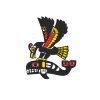By Shalu Mehta | August 12, 2022
A group of citizen volunteers is mobilizing to explore connections and create solutions for the Koksilah watershed.
In June 2022, a group of community members gathered near the Xwulqw’selu Sta’lo’ (Koksilah River) to sign up for a community science project.
As hot dogs and veggie dogs grilled over a fire and folks sipped on Cowichan Valley tap water, people chatted about their connection to the water and why they were there.
Most were there to hear more about the Xwulqw’selu Connections project, which aims to learn where streams go dry in the Koksilah Watershed and what can be done to increase water flows in the future.
The five-year project is in its second year and focuses on connections — between people and the watershed, between the surface water that we see and the groundwater that we don’t see and between community science and policy that affects the watershed.
I was there too, as part of a new group of volunteers signing up to monitor temperature and mineral conductivity of streams and tributaries that feed into the Xwulqw’selu Sta’lo’.
What I didn’t realize at that time was that this project offers much more than just science. It offers an opportunity to intentionally be in relationship with the Xwulqw’selu Sta’lo’ and connect with others doing the same.
“There’s this emphasis on really getting people out onto the land,” says Ella Martindale, a Quw’utsun community researcher with the project who spoke with me on the phone. “I think there’s a lot of collective learning that we can do together.”
Read the rest of the article at: Learnings from the Koksilah River — The Discourse.
 Email
Email



